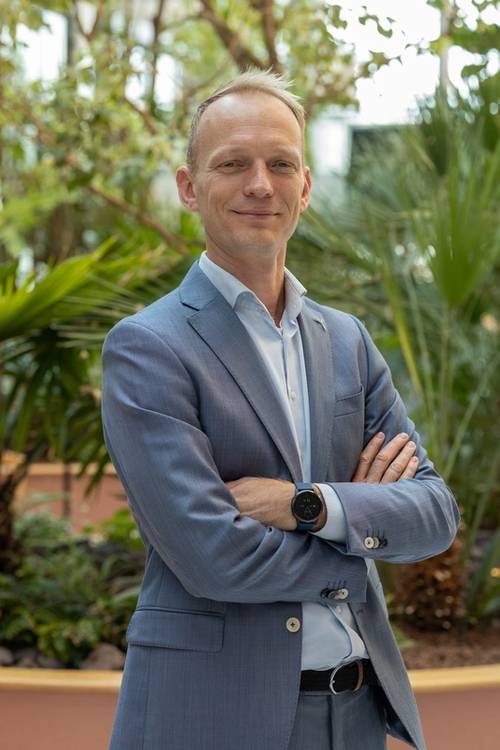Insights
Technology & Renewable Energy
The Role of Technology in Making Renewable Energy a Reality
Fugro's Wouter Maas highlights the potential for technology to extend the lifespan and optimize the performance of offshore wind turbines, leading to increased renewable energy production and a faster transition away from fossil fuels.
By Wouter Maas, Strategy Director Offshore Wind O&M, Fugro
The offshore wind industry is now well established and widely relied upon to meet our energy needs.
In January 2023 the UK saw the record for the highest-ever level of wind generation, providing over half of its daily electricity, according to the National Grid. And in November 2022, there was a day when wind contributed its highest-ever share to the electricity mix (70 %).
Clearly, good progress has been made in the shift to renewables, but there’s a long way to go for society to make the full shift away from fossil fuels.
Building new offshore structures is a big part of the solution and, encouragingly, the UK government has pledged to deploy 40 GW of offshore wind by 2030.
This is four times more than the 10 GW it currently has in production and enough to power every home at current electricity usage levels.
There may, however, be a missed opportunity to use technology to further increase the production of renewable energy.
Scaling Up Energy Production
Electrification, rising living standards, and a growing population means energy demand is increasing around the globe. In fact, power consumption is projected to triple by 2050, according to McKinsey.
Most of this energy will be supplied by renewable sources, with the IEA claiming that renewables will be the world’s top electricity source within three years.
This rapid shift towards renewables is driven by both wants and needs; individuals, countries and organizations want to reduce their impact on the planet, and many are also being held to account by global climate goals.
The advantage of renewable energy is that it is scalable. Arguably, with the right infrastructure in place, it is almost infinite. Technology can play an important role here in making sure that production is fully optimized and the transition to renewable energy can finally become a reality.
Improving Asset Longevity
New offshore wind projects are critical for countries to meet growing energy demands and reach Net Zero targets. However, we must not forget the contribution of existing sites and structures. To scale up production, we need to look after the old, as well as the new.
There are already over 2,000 wind turbines off the coast of England, Scotland, and Wales – and we cannot afford for any of them to fall into a state of disrepair.
The goal should be for wind turbines to stay operational beyond 25 years – with each additional year in operation generating ~20 GWh in renewable energy (the equivalent to powering 14 million homes). This will help to significantly increase the production of renewable energy.
By monitoring offshore wind turbines remotely with a set of specific sensors, operators can identify and correct issues such as fatigue, corrosion, and scour before they impact the asset’s integrity or performance. This can reduce the frequency of subsea inspections (which is critical to bring down costs) and help to make sure turbines function efficiently to the end of their life cycle and beyond.
Technology Takes Industry to New Levels
Technology is rapidly advancing to optimize offshore wind projects. For example, automated data delivery can now provide real-time access to data and support continuous remote monitoring of assets.
This is helping to provide early indications of fatigue and failure – reducing costs, enhancing asset performance, minimizing downtime, and improving safety for wind farms. All these things are helping to increase production of renewable energy and reduce our reliance on fossil fuels.
Overall, better access to real-time data will help operators and asset owners to make more informed decisions and implement strategies based on the reality of the situation.
This enables condition-based and preventative maintenance to be decided and implemented on a per-turbine basis – maximizing the total value of their asset, speeding decision-making, and extending its lifetime and value.
It is important to also remember that, as energy production is scaled up, wind projects may be located anywhere in the world. Conditions can be extremely different, so enhanced visibility is critical to prevent asset owners from making assumptions and misguided decisions.
Clearly, there is a huge opportunity to use automated data delivery to extend the life cycle of wind turbines and increase production – but this does also mean that wind farm operators are now grappling with huge datasets.
To make sure the right data is available at the right moment in time, they should use a data delivery and engagement platform. After all, every decision based on this information could contribute to achieving the bigger goal of supporting the transition to renewables.
Technology can play a huge role in optimizing renewable energy production. Ultimately, the asset owners that continually push the boundaries will not only be more profitable but will make the biggest difference towards a more sustainable future.

About the Author:
With over a decade of experience in the energy sector, Wouter Maas is committed to reduce the levelized cost of wind energy. As Solution Director Offshore Wind O&M, Wouter is leading the development of Fugro’s inspection and monitoring services, which support operational wind farms to implement predictive maintenance strategies until end of lifetime and beyond.